Fixtures & Appliances
33 Popular Types of Doors
A quick overview of common door styles for houses.
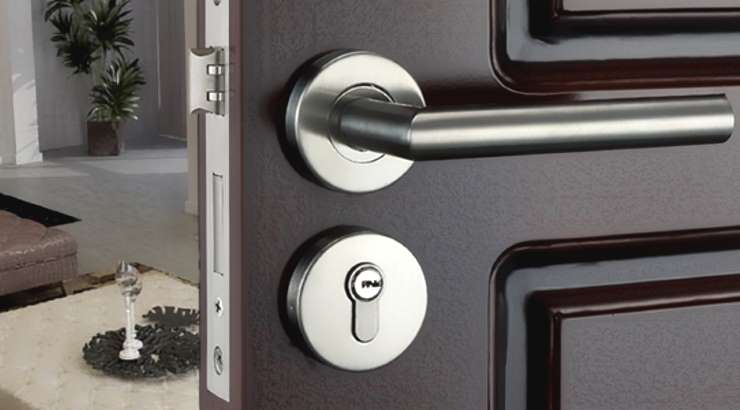
A door is a hinged, revolving or sliding structure that provides security by controlling access to an enclosed space such as a building, compound, or even a car.
Besides providing security, doors add an aesthetic view to structures while providing ventilation to sections of a house.
Here are different types of doors for interior and exterior based on working operations, material, placing of door components and method of construction.
A.) Types of Doors Based on Working Operations
1. Revolving Doors
Revolving doors consist of a central shaft to which four radiating shutters are fitted.
The shaft has a ball-bearing system at the bottom to allow the shutters to move around the vertical axis when pushed to provide an entrance on one side and an exit on the other.
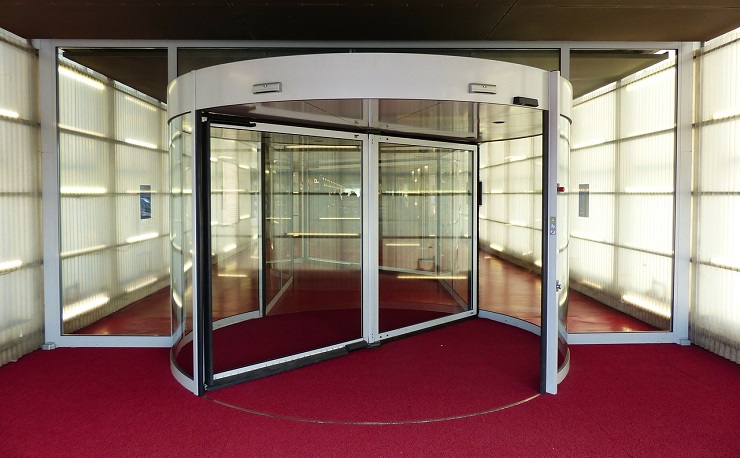
These types of doors can be fully panelled, glazed or partially glazed, and are ideal for public places such as banks, libraries, and retail outlets that receive constant visitors.
2. Sliding Doors
Also known as bypass doors, sliding doors are fitted with runners and guide rails that allow the door to slide on the sides.
The door may have more than one sliding shutter depending on the space available.
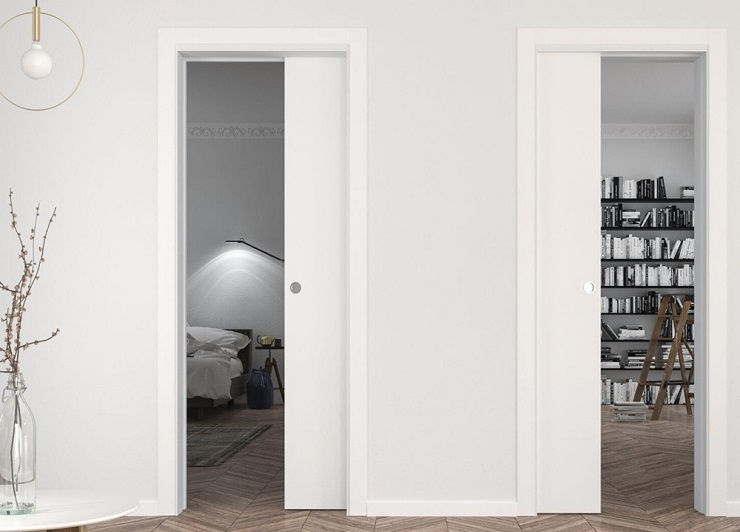
Unlike most other types of doors, sliding doors do not swing open and can only allow access when moved on the track.
These types of doors are ideal for interior zones of a building with space limitations.
3. Swing Doors
These types of doors have their shutters attached to the frame using double action springs that can allow access both inward and outward. It works this way: a slight force opens the door after which the spring quickly forces the shutter to return to its place.
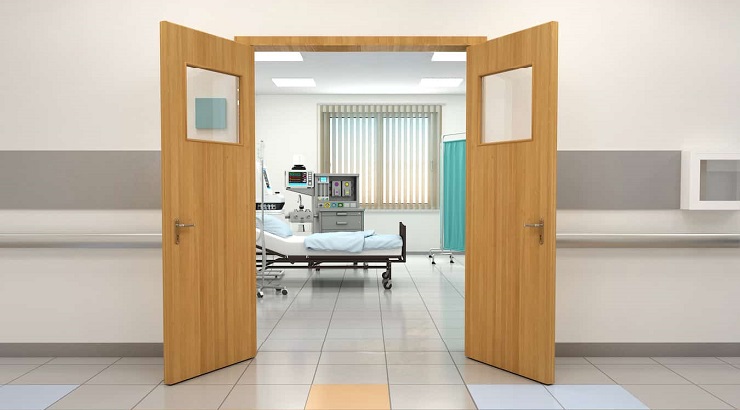
It is important to provide glass panels or a peephole at eye level to help expose the person using the door from either side to prevent accidents.
These doors are also common in public places.
4. Collapsible Steel Doors
Collapsible steel doors consist of vertical double channels (20 X 10 X 2 mm) linked together with hollows on the inside to create an artificial gap.
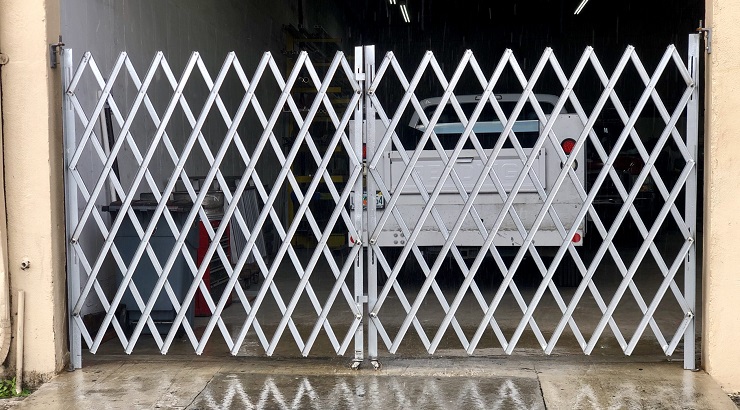
The channels are spread out 100mm – 200mm and fixed with diagonal iron flats that allow the shatter to open and close like a curtain.
These doors are mostly used to provide extra security.
5. Rolling Steel Shutter Doors
These doors are fitted with a frame, drum, and shutter that is made up of steel plates.
With a thickness of 1.25cm, the plates interlock with each other and are coiled on a pipe shaft ‘drum’ mounted at the top.
A rolling steel shutter door is designed in a way that the shutter moves in two vertical steel guide channels fitted at the ends. The channels are deep enough to house the shutter and keep it in place.
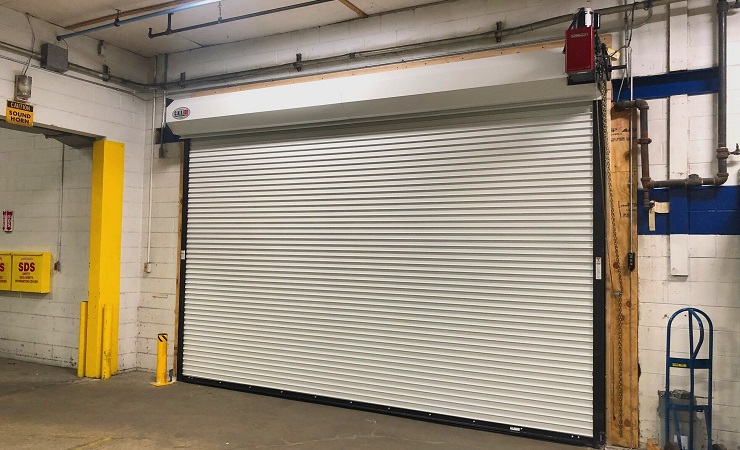
This type of door is raised to open and lowered to close. The opening and closing process can be motorised for large rolling steel shutter doors – measuring more than 10 square metres.
B.) Types of Doors Based on Material
6. Wooden Doors
Wooden doors are easily the most common type of doors in the market. The availability of wood makes it popular among those looking to build on tight budgets.
However, it is worth noting that not all wooden doors are cheap. Depending on the type of tree cut for timber, some doors especially those made from hardwood can be quite expensive.
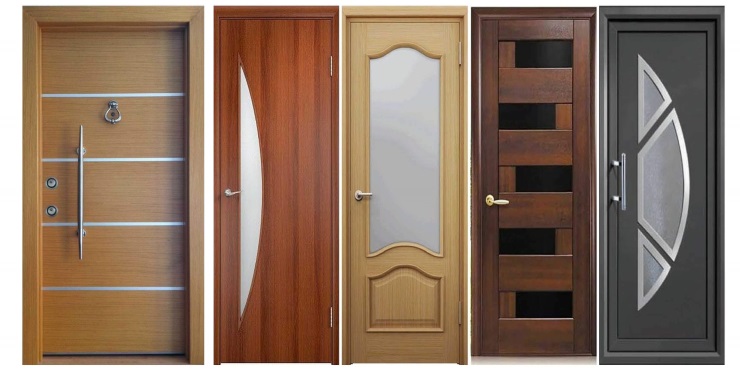
It is also important to understand that wood has its limitations when it comes to vulnerability to break-ins and wooden doors should therefore be most appropriate for interior entrances.
7. Bamboo Doors
As one of the world’s fastest renewable plants with a maturity cycle of three to four years, bamboo is a great alternative to forest hardwoods.
Bamboo is usually harvested for processing into bamboo-jute composites that are used in the manufacture of doors, and windows, as well as their frames.
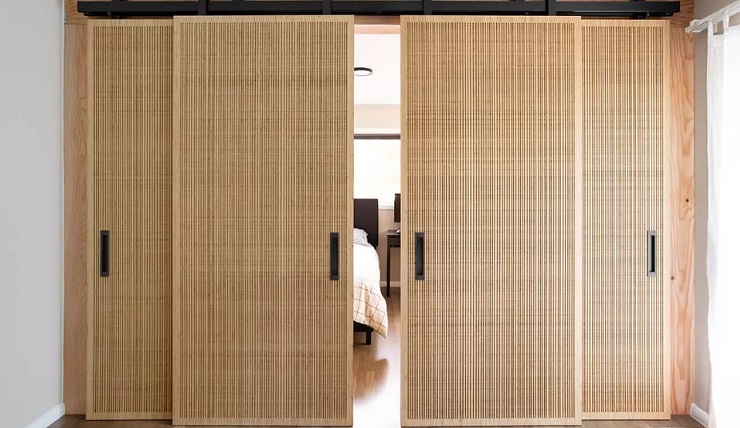
Bamboo doors are gaining popularity among homeowners as they are cost-effective, eco-friendly, termite-resistant, water-resistant, corrosion-resistant and bio-degradable.
8. Glazed Doors
Depending on the preferences of a homeowner, doors can be made out of glass for specific sections of a house – especially on the backside to provide a clear view of the garden.
Glazed doors can also be fitted on the front side of the home but care should be taken to safeguard privacy and security.
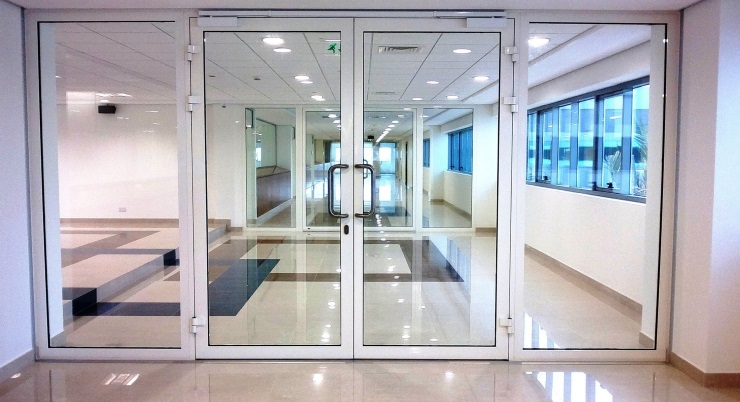
These doors are usually made by setting glass panels into wooden or metal frames.
One of the drawbacks of glazed doors is the high cost of installation compared to other types of doors. Besides, they are prone to cracking or breaking when subjected to stress or severe blows.
9. Aluminium Doors
Aluminium is a lightweight metal used to create products such as doors, windows, curtain wall systems, etc. It is mainly used to make sliding doors, hinged doors, French doors and sliding folding doors.
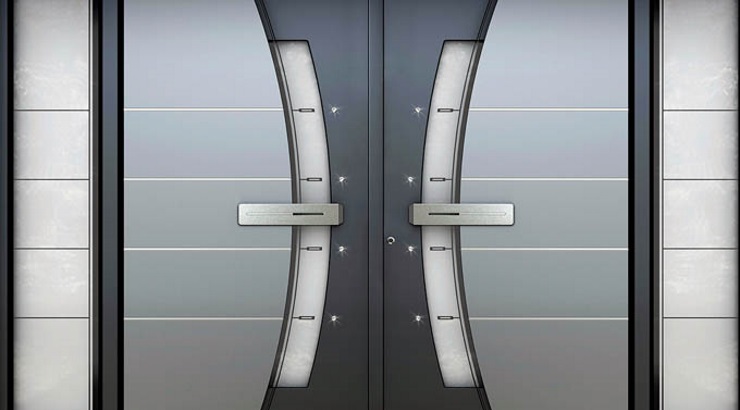
Aluminium doors are strong, corrosion-free and durable, and they offer great value for money compared to many types of doors. Besides, they are customisable to suit the needs of homeowners.
10. Steel/Metallic Doors
Steel doors are made of either a polyurethane or polystyrene core with a steel skin over the top to lower their weight and to make them operate without tearing out the hinges.
These doors are ideal for outside-facing doorways that are exposed to heavy traffic and exterior elements.
While most people would not consider a steel door for their houses, the truth is that metal or steel doors can be installed in a private residence, mostly at the front entry, to heighten security.
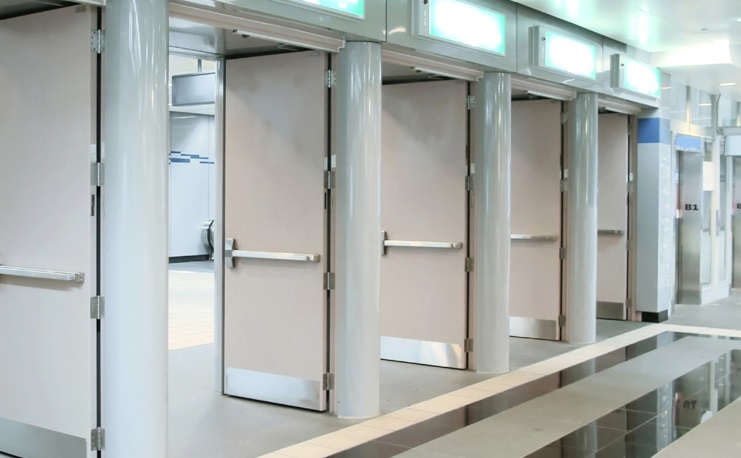
However, steel doors are quite difficult to install due to their heaviness.
There are several types of steel/metallic doors. These include collapsible steel doors and rolling steel shutter doors (already discussed above), as well as mild steel sheet doors, corrugated steel sheet doors, hollow metal doors, and metal-covered plywood doors.
11. Mild Steel Sheet Doors
Mild steel sheet doors are strong types of doors that are made by welding mild steel plates to the shutter frame of the door.
The strength of the door depends on the quality and thickness of the plates.
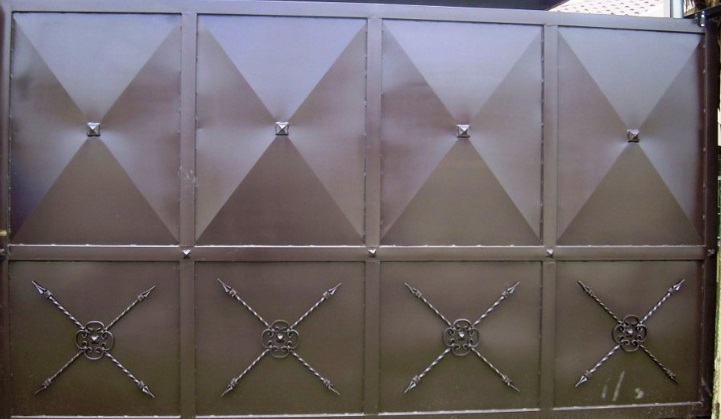
The door frame of a mild steel sheet door is made up of angle or T-sections, while the shutter consists of a frame of iron with two verticals and at least three horizontals.
Mild steel sheet doors are mainly used in workshops.
12. Corrugated Steel Sheet Doors
Corrugated steel sheet doors are made exactly like the mild steel sheet doors but instead of welding mild steel plates to the shutter, a corrugated steel sheet is used.
13. Hollow Metal Doors
A hollow metal door is made by laminating steel panels on both sides of a hollow metal frame. These doors score highly in fire resistance and are popular in commercial environments due to their strength and durability.
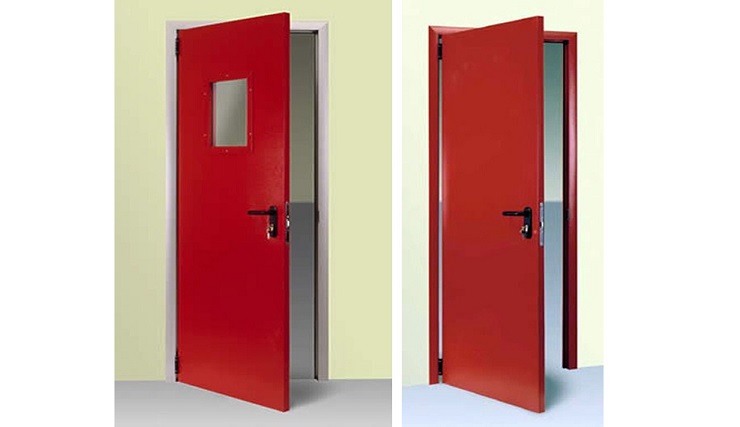
14. Metal Covered Plywood Doors
A metal-covered plywood door is a fire-proof door that is made up of plywood and mild steel.
The door is sheathed into tight-fitting sheet metal with firmly folded joints to eliminate air to ensure the core of the door does not catch fire. These doors are mainly used in factories and warehouses.
15. PVC Doors
Polyvinyl chloride (PVC), one of the world’s most produced synthetic plastic polymers, is mainly used to manufacture plastic products such as water tanks, pipes and doors.
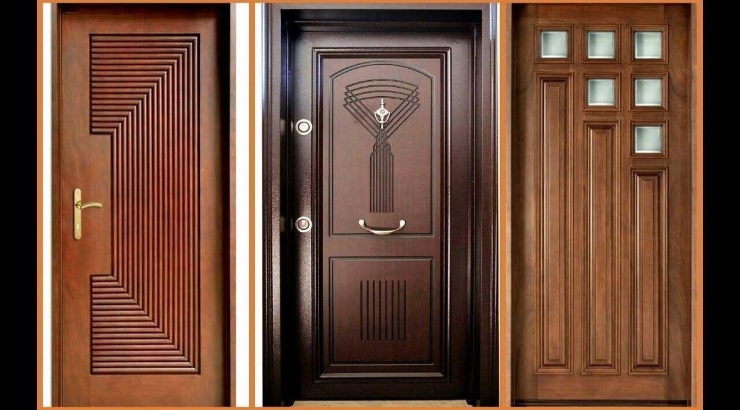
In the past few years, PVC doors have become popular among homeowners due to their durability, design flexibility, ease of installation, anti-corrosion, and moisture and termite resistance.
These types of doors are not ideal for front entrances because of their inability to endure severe weather conditions.
16. Fibre Reinforced Plastic Doors
These doors are manufactured using artificial composite materials, which have recently gained popularity among homeowners looking for alternatives to wood.
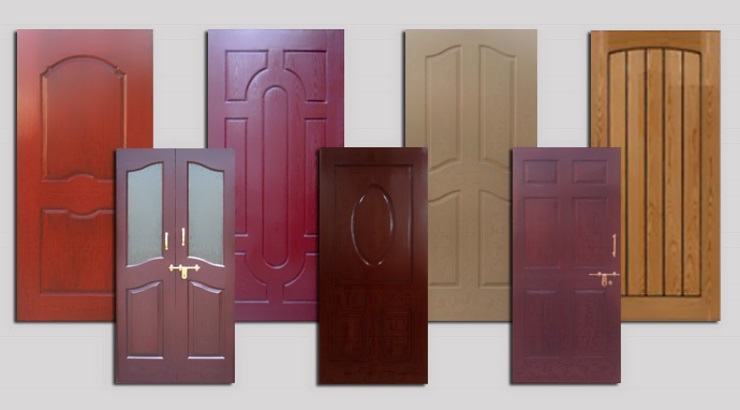
Fibre-reinforced plastic doors offer numerous benefits such as ease of installation, zero maintenance costs, durability, lightweight, ease of painting, and resistance to chemicals, termites, and water.
17. Fiberglass Doors
Fiberglass doors are factory-made using a reinforced plastic material implanted in a resin matrix to imitate the look of wooden doors without the danger of bulging or rotting.
They have three components: the frame, the core, and the skin.
The frame is commonly made of wood or any high-strength composite material while the core is jam-packed with polyurethane insulating foam that slows the spread of heat, cold, and sound in a building. The skin is mostly made of wood.
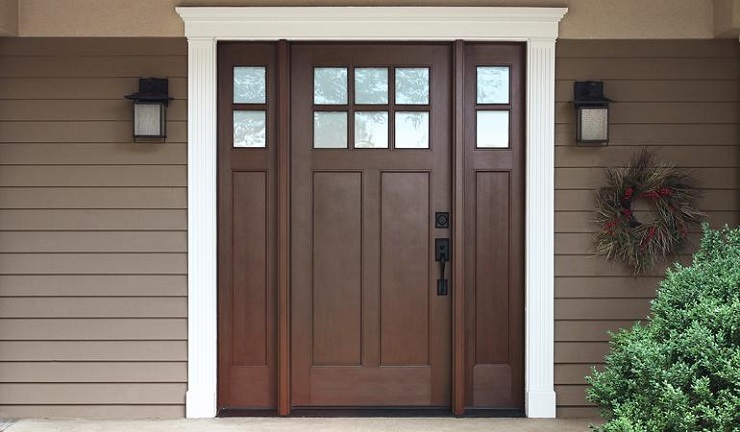
Used for both interior and exterior positions, fiberglass doors are also a great alternative to wooden and steel doors particularly when it comes to maintenance expenses.
c.) Types of Doors Based on Components
18. Battened and Ledged Doors
These are the most basic types of doors containing vertical wooden boards (battens) of the height of the door with 3cm thicknesses which are tongue and groove interconnected.
Battened and ledged doors have three horizontal battens – one each at the top and bottom and the third batten in the middle.
Often, the battens are about 15-18cm wide and 2-3cm thick.
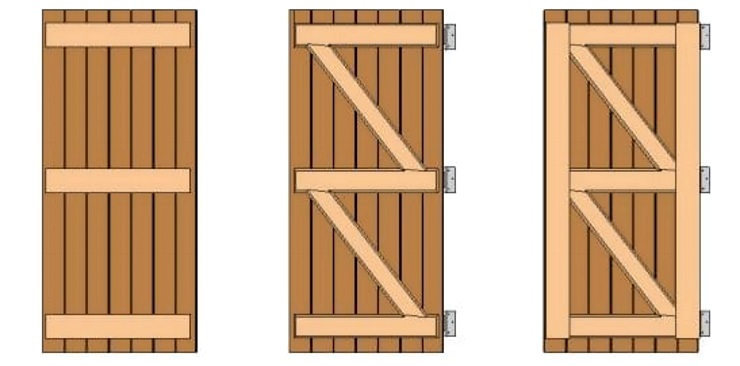
The doors, which are common in the interior entrances of budget homes, can either be braced or braced and framed to offer firmness and enhanced appearance.
19. Battened, Ledged and Braced Doors
A battened, ledged and braced door is a battened and ledged door to which braces have been added to strengthen the door and to prevent it from sagging due to the weight.
The braces must slope upwards from the hinge edge of the door and should be housed with a skew notch into the ledges. These types of doors can be used for wider entrances.
20. Battened, Ledged and Framed Doors
A battened, pledged, and framed door is an improved version of a battened and ledged door.
In addition to providing battens and ledges, the shutters of these doors are provided with a framework of two vertical members known as styles.
Battened, ledged and framed doors are ideal for narrow entrances.
21. Battened, Ledged, Braced and Framed Doors
This door is similar to the above only that it is provided with braces to make it more rigid.
The braces of a battened, ledged, braced and framed door are connected diagonally between the ledges at about 4cm from the stiles.
Types of Doors Based on Construction
22. Flush Doors
Flush doors are simple but elegant accesses that have a plain face on the front and the back. The doors are made by sandwiching plywood or Medium Density Fibreboard over a comparatively light timber frame.
The hollow area between the front and back is usually filled with cardboard cores.
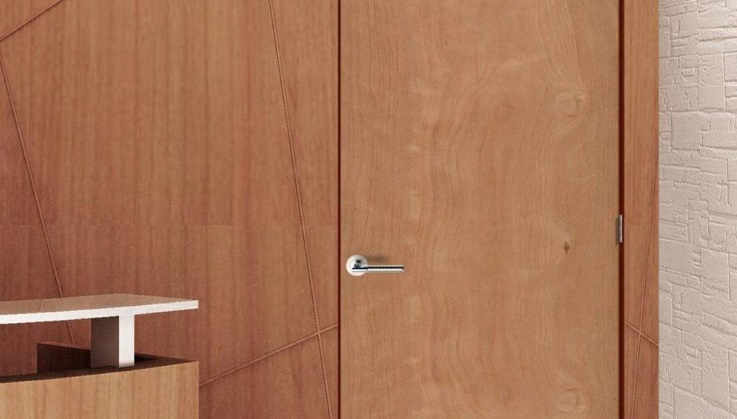
The frames of these doors can be made of wood or any other material that can hold their weight. The doors, which can be finished with either laminates or veneer, are hinged on one side – which means they can open in only one direction.
Flush doors are often used in interior locations such as bedrooms, kitchens, and toilets but can also be used for external entrances – with some design alterations.
23. Framed and Panelled Doors
These doors are designed to include floating panels installed between vertical and horizontal frame membranes that form the outside frame of the door.
The panels are made of timber, blockboard, plywood, hardboard, or glass, while the frames are made of wood.
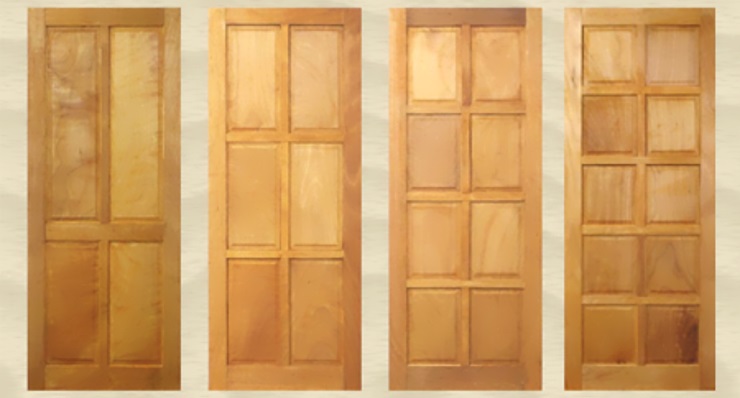
Ordinarily, the panels are not attached to the frame but are left to ‘float’ within it to avoid twisting the frame.
Framed and panelled doors – which come in various design options – are a great choice for entry door installations for several reasons including durability and aesthetic purposes.
24. Wire Gauged Doors
Wire-gauged doors boast shutters whose panels are substituted with wire mesh to allow natural ventilation while restricting the entry of mosquitoes, flies, and insects.
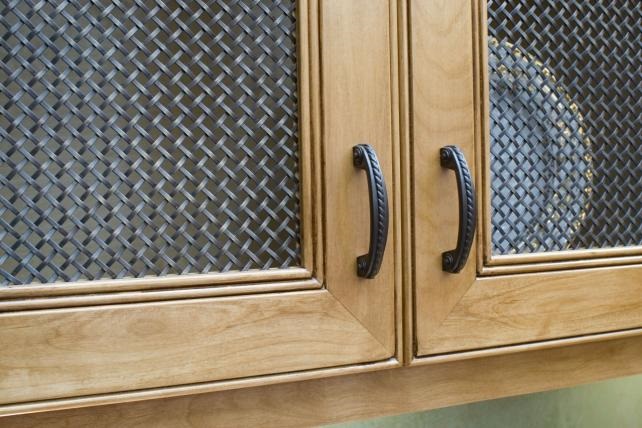
These doors are mainly used for kitchens, hotels, and other rooms that require some adequate flow of fresh air.
25. Louvered Doors
Louvered doors are designed to allow natural ventilation when the door is closed while providing privacy in the room by preventing the inside view from outside. This is made possible by the presence of louvers.
The louvers are made of wood or glass that is fixed in the frame at a certain angle to allow air through without undermining the privacy of the room.
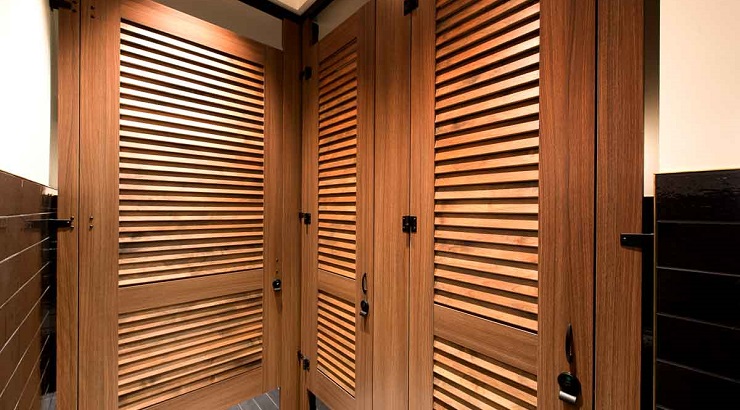
They are commonly used for toilets in both residential and commercial buildings.
Other Types of Doors
26. Dutch Doors
As the name suggests, Dutch doors – also known as double-hung or half doors – originated in the Netherlands where they were common in the 17th century.
A Dutch door is split in the middle horizontally to allow the top half to open while the bottom half remains closed.
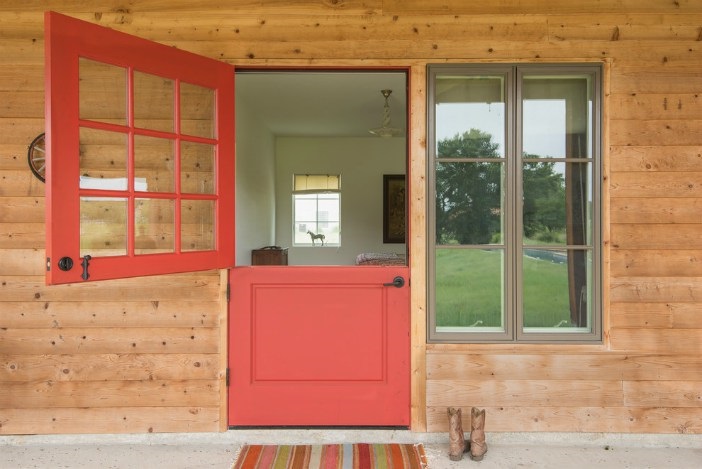
They were invented for use as exterior doors of farmhouses to keep animals out of the house while allowing fresh air and light to enter the house.
RELATED: 15 Popular Types of Doors for Closets in Stylish Homes
Dutch settlers introduced the doors to America and other parts of the world where the style was adopted on rural houses across various continents.
27. Panel Doors
These doors are made up of several panels, each fitting together to make a finished product. A six-panel door, for example, has six inset rectangles or squares within the finished door.
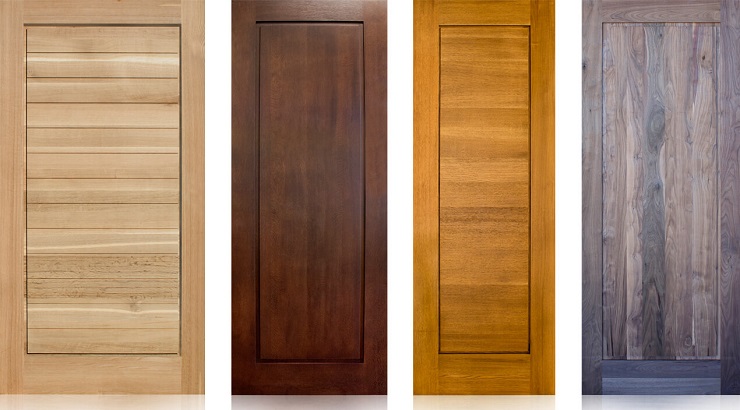
The panels are often surrounded by simple or complex stiles, rails, and mullions that make the door firmer and more durable.
Panel doors are used for exteriors but they can also be fitted as interior doors.
28. Pocket Doors
These types of doors slide and disappear into a special section inside the adjacent wall when open. This differentiates them from sliding doors, which remain visible when open.
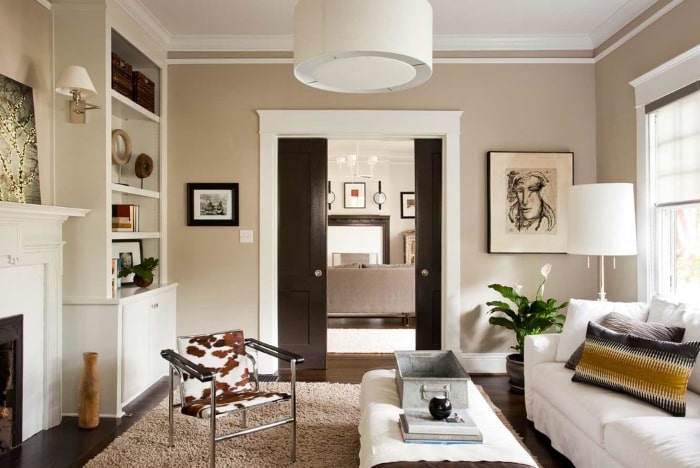
Pocket doors are ideal for tight spaces such as a narrow hallway where clearance is a concern. They are also a perfect choice for open floor plans that are occasionally closed off as needed.
29. Hinged Doors
Hinged doors are made of either a solid wooden panel door or a hollow-cored door fixed to a doorpost with two or more hinges.
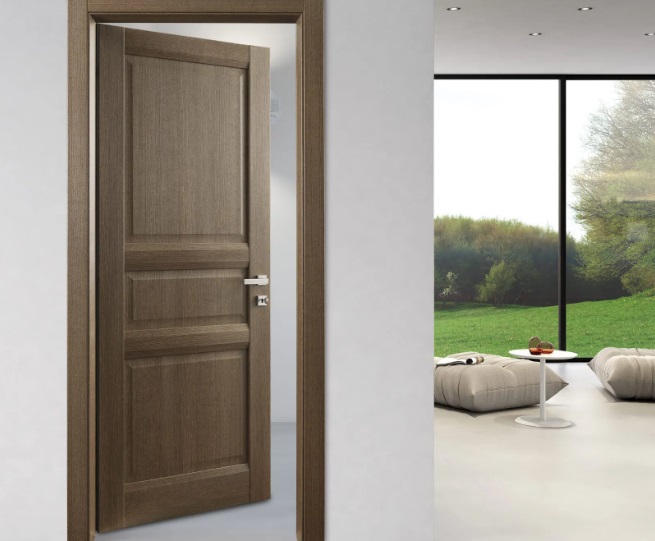
These types of doors are very common and useful in virtually any application that requires a door. They are often fitted as front entry, rear entry, or interior doors.
30. Bifold Doors
Also known as folding doors, bifold doors are doors that open by folding back in sections. The doors are made up of a series of panels that fold up against a wall like a concertina.
Bifold doors can be used for both interiors and exteriors.
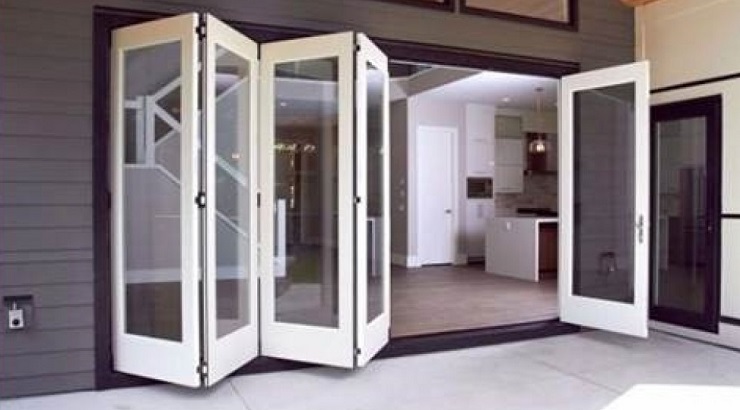
Internal bifold doors are ideal for smaller spaces such as laundry rooms or wardrobes while external bifold doors are a perfect choice for those seeking a unified link between the inside and the outside of a house.
31. French Doors
Also known as a French window, a French door is made up of glass panes that extend throughout or most of its length. These doors are placed at the back of a house where they open to the garden.
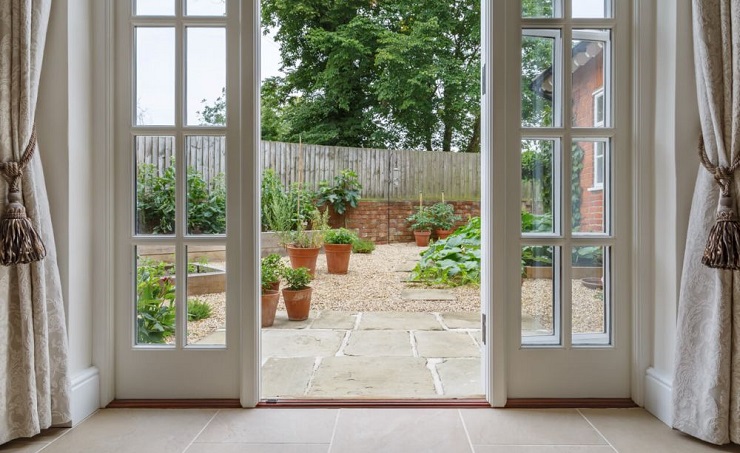
French doors are fitted with hinges on each side of the opening enabling them to open in the middle. They offer unclogged views when both side doors are open.
32. Pivot Doors
A pivot door is a swing door that is designed to revolve around its vertical axis. This is different from regular hinged doors whose hinges are fastened to the side of the door and the adjacent wall.
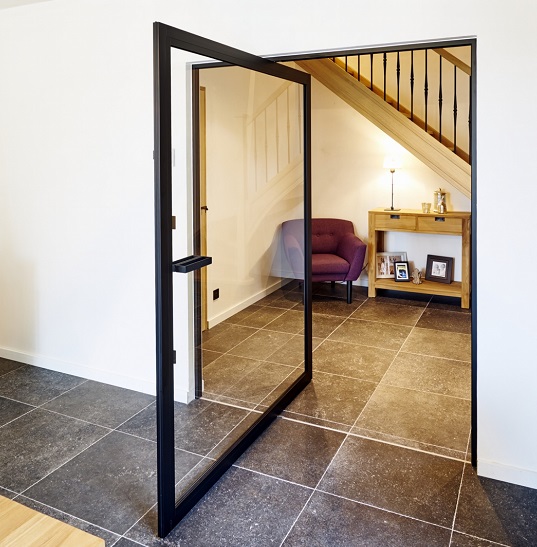
The vertical axis – known as the spindle – enables a pivot door to rotate 360 degrees in its axis thereby achieving a well-designed swing in the space.
Pivot doors are often used for commercial environments such as gyms, spas, and indoor bathrooms.
33. Roller Doors
A roller door, also called a high-speed door, is mostly used in warehouses where heavy-duty protection is not required.
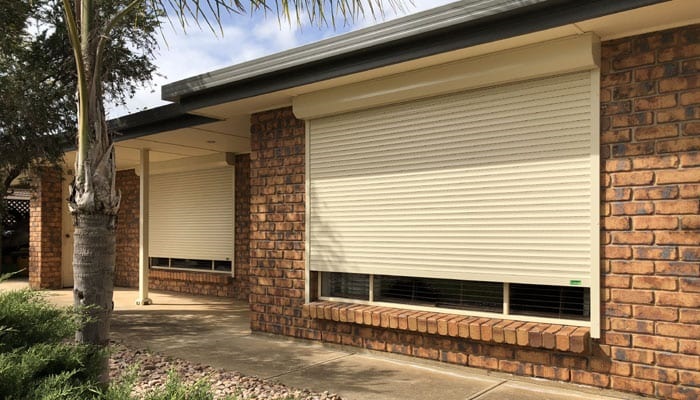
Unlike the heavy-duty roller shutter which contains many horizontal slats hinged together, a roller door is lighter and made up of a single piece of curtain.














